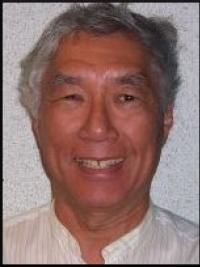ZEN MESTEREK ZEN MASTERS
« Zen főoldal
« vissza a Terebess Online nyitólapjára

Whalen Lai (1944-)
黎惠倫 Lai Whalen (= Lai Wai-lun; Mandarin: Li Huilun)
Lai Wai-lun was born on July 8, 1944 in Canton, People's Republic China.
Professor Emeritus of Religious Studies, Department of Religious Studies, University of California, Davis,
since 1977.
https://religions.ucdavis.edu/people/profile/235
Fellow United Board Xian Higher Education, 1964-1968, Harvard University, Yenching, Kent fellow, 1969-1974. Member Society for Study Chinese Religions, Harvard Center for Study World Religions.
Selected Publications:
BOOKS:
Book co-edited with Lewis Lancaster, Early Ch'an in China and Tibet. (Berkeley: Asian Humanities Press, 1983).
Book co-authored with Michael von Brueck, Buddhismus und Christentum: Geschichte, Konfrontation, Dialog . Munich: Beck, 1997.
Partial translation into English, Christianity and Buddhism: A multicultural history of their dialogue. New York: Orbia, 2001.
Encyclopedia Entries in Encyclopedia of Monasticism, ed. William M. Johnston (Chicago London: Fitzroy Dearborn, 2000).
Entries on: “Images: Buddhist,” “Conversion/Initiation: Buddhist,” “Scholasticism: Buddhist Spiritual Ladders,” “Master/Disciple: Buddhist,” “Governance: Buddhist,” “Hierocrat: Buddhist,” “Prophethood: Japanese Buddhist,” “Charities/Social Service: Buddhist,” “Gnostic Cosmogony: Buddhist,” “Sacred Topography: Buddhist,” “Intercession for the Dead,” “Economic Justice: Buddhist.”
Encyclopedia Entries on. “Chinese Buddhism,” “Chinese Myth,” “Hui Shih,” “Kung-sun Lung,” “Ma-tsu Tao-i.” in Encyclopedia of Chinese Philosophy, ed. Antonio Cua (New York: Routledge, 2003).
The whole China section in Encyclopedia of Asian Philosophy, ed. Oliver Leaman (London-New York: Routledge, 2002).
SOME ESSAYS OR CHAPTERS IN BOOKS
1978. After the Reformation: Post-Kamakura Buddhism by Whalen Lai. Japanese Journal of Religious Studies, Vol. 5, No. 4 (Dec., 1978), pp. 258-284.
1979. “Ch'an Metaphors: waves, water, mirror, lamp.” Philosophy East & West; Vol. 29, no.3, July, pp. 245-253.
1980. Hu-Jan Nien-Ch'i (Suddenly a Thought Rose). Chinese Understanding of Mind and Consciousness. The Journal of the International Association of Buddhist Studies, Vol. 3, No 2, pp. 42-59.
1982. “Sinitic speculations on buddha-nature: The Nirvana school (420-589).” Philosophy East and West 32:2 April, 1982 p. 135-149.
1984. Symbolism of Evil in China: The K'ung-chia Myth Analyzed." History of Religions, 23, 4:316-3 43.
1985. "Ma-tsu Tao-i and the unfolding of southern Zen" Japanese Journal of Religious Studies, (Special Volume for Heinrich Dumoulin) 12, 4:173-192.
1985. Wonhyo (Yüan Hsiao) on the Nirvana School: Summation Under the "One Mind" Doctrine. Vol 8. No. 2. pp. 75-84.
1985 (Paper). "The One-Legged and the Three-Legged." Asian Cultural Studies, (International Christian University, Tokyo) 3, A:67-80.
1986 "Why Is There Not a Buddho-Christian Dialogue in China?" Buddhist- Christian Studies, Vol.6, pp.81-96
1986 (Paper). "Dating the Hsiang-fa Chüeh-i Ching." Annual Memoirs of Otani University Shin Buddhist Comprehensive Research Institute, 4:61-91.
1987. Lai Whalen: Tao-sheng's Theory of Sudden Enlightenment Re-examined.
In: Peter N. Gregory (szerk.) Sudden and Gradual: Approaches to Enlightenment in Chinese Thought.
Univeristy of Hawaii Press. Honolulu, 1987, 169—200.1989 "The Buddhist-Christian Dialogue in China," in Religious Issues and Interreligious Dialogues, edited by Charles W.H. Fu and Gerhard E. Spiegler. New York: Greenwood Press. Pp.613-631
2004. “The Earth Mother Scripture: Unmasking the Neo-Archaic…” Beyond Primitivism: Indigenous Religious Traditions and Modernity, ed. Jacob Olupona (New York: Routledge), pp. 200-213.
2004. “The Origin of Ming Buddhist Schism.” In: Heterodoxy in Late Imperial China, ed. Kwang-Ching Liu and Richard Shek (Honolulu: University of Hawaii Press), pp. 109-135.
2003. “The Century of the Holy Man in Chinese History (316-439): The Death of Hsuan-Kao,” in Pacific World: Journal of the Institute of Buddhist Studies, (Special section: “In Memory of Masatoshi Nagatomi”) Third series, 5:143-161.